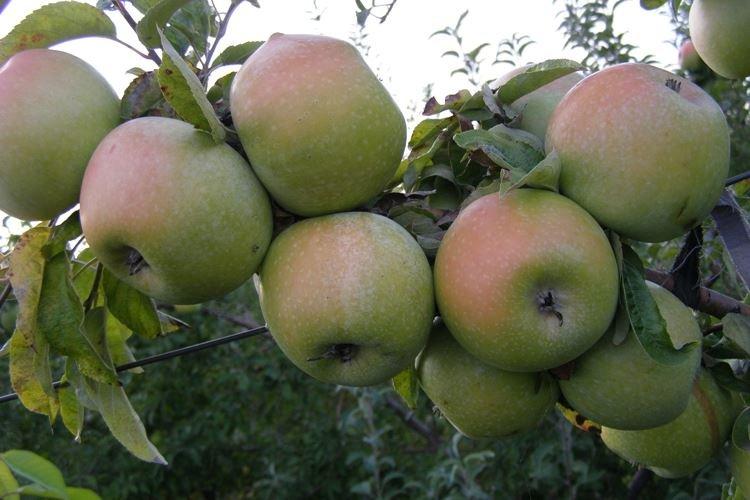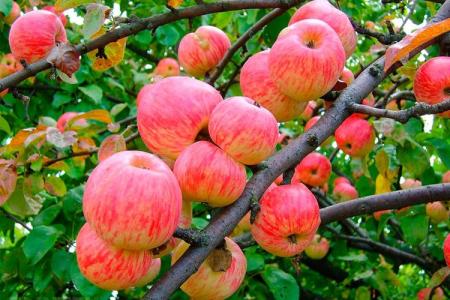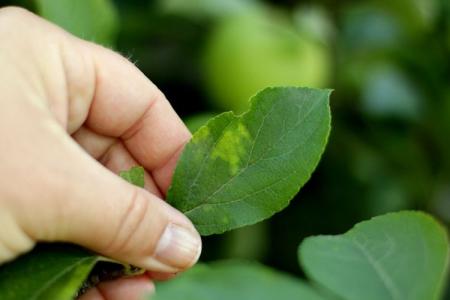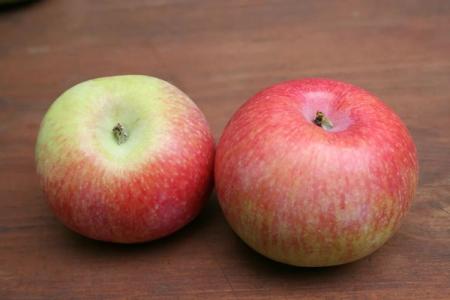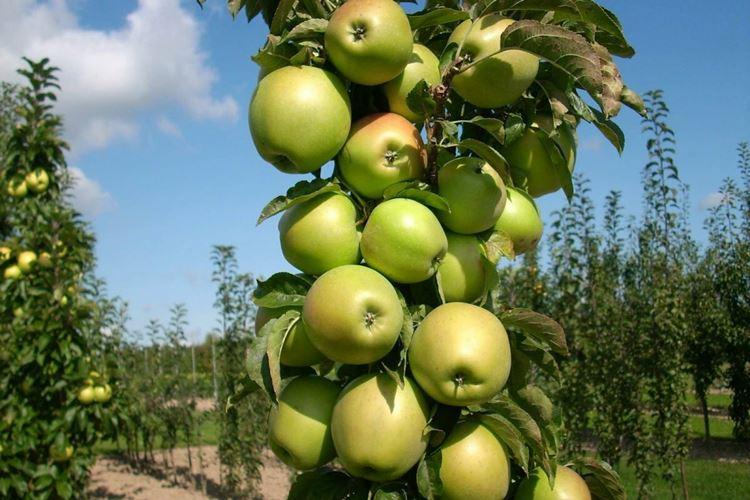
The President variety carries its noble name for a reason, and in order to understand this, it is enough to get acquainted with the description of this columnar apple tree. Large fragrant fruits are appreciated by amateurs and experienced gardeners. And to make sure you succeed in everything, we have already collected the main information on care and planting!
Description and characteristics of the variety
The President variety is no longer young - it was bred in 1974, and since then it is rightfully considered one of the best domestic varieties. It harmoniously intertwines the strongest qualities of the Abundant variety with the columnar variety Vozhak.
The trees grow semi-dwarf, about 2 m, due to which it is very convenient to care for them and harvest. The columnar crown is densely covered with leaves, but very narrow - about 20 cm. The glossy dark leaves seem large for such a compact tree.
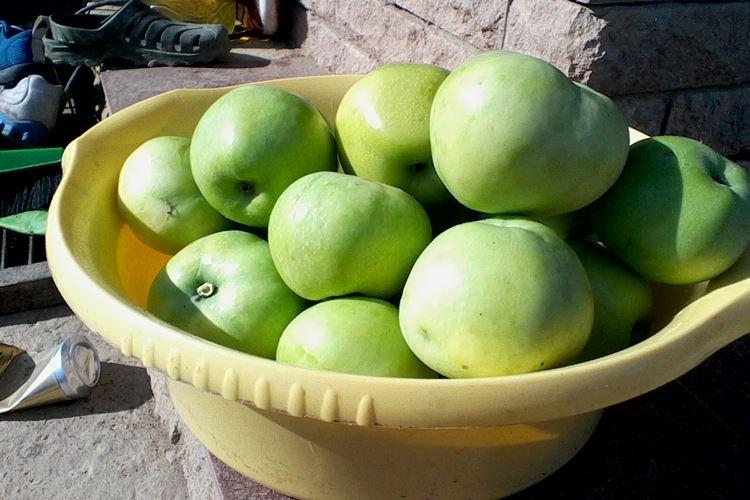
Large apples up to 250 g evenly cover the entire trunk, starting from a height of 30 cm above the ground. The pulp is barely grainy, juicy, with an expressive sweet and sour taste.
The fruit is beautifully round and symmetrical in shape with a light yellow-green color. As it matures, a slight blush appears on the thin, shiny skin, but not red, but rather pink-purple. Dessert apples are good fresh, for preparations and in the form of dried fruits.
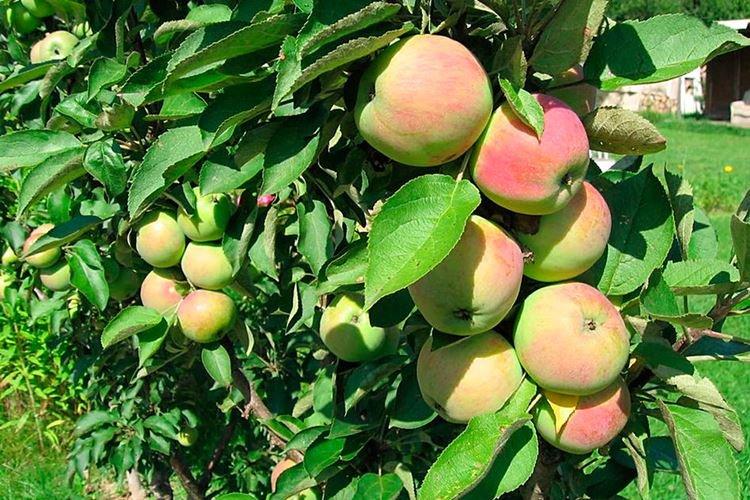
Caring for a columnar apple tree President
The President's apple tree is quite unpretentious, but if you provide it with regular watering, feeding and proper pruning, it can give up to a record 16-20 kg from one 2-meter tree. Although the yield varies from year to year, it is always regular.
Lighting
The President prefers a sunny location, but he is not afraid of bad weather. It has been precisely studied that the fruits form well even in rains and cold weather.
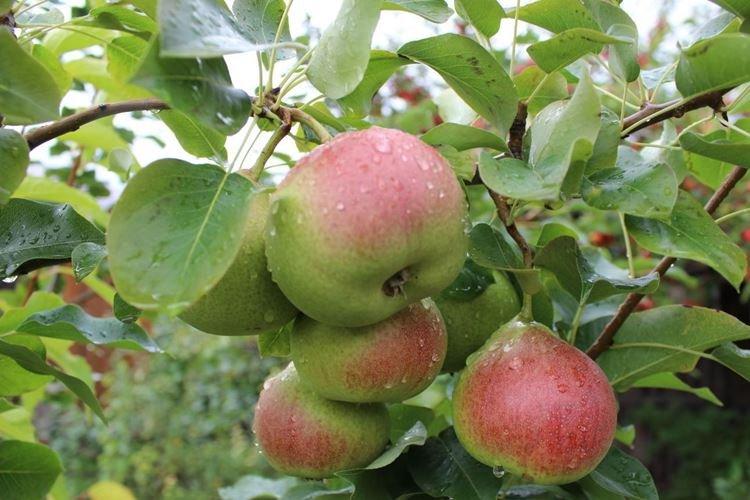
Watering
A young columnar apple tree needs to be watered regularly and intensively so that the soil is always moderately moist. This is essential for good rooting and development. But mature trees need additional watering only in the driest months.
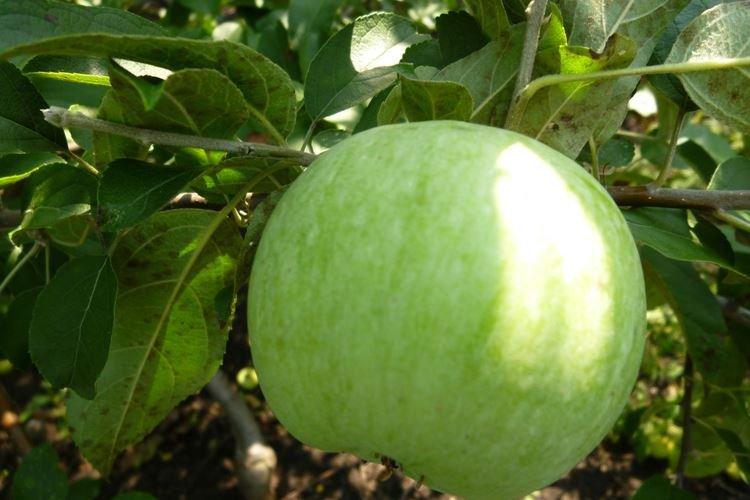
The soil
For the President, the soil must be fertile, because it is a very productive variety. But the apple tree does not tolerate constant dampness, so planting on soils with a close occurrence of groundwater is excluded. Be sure to take care of good drainage.
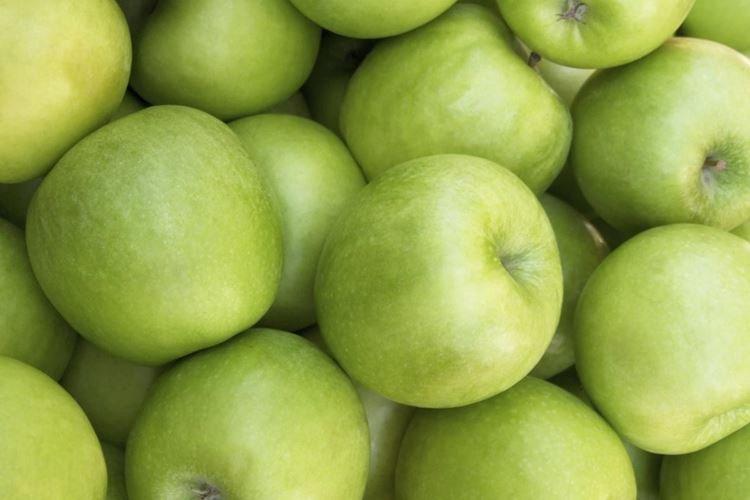
Top dressing
The President reacts to the timely introduction of fertilizers with a generous increase in the harvest. From the beginning of the season, alternate organic matter with mineral fertilizers according to the standard scheme for apple trees. Gradually move from nitrogen and urea to potassium and complex supplements.
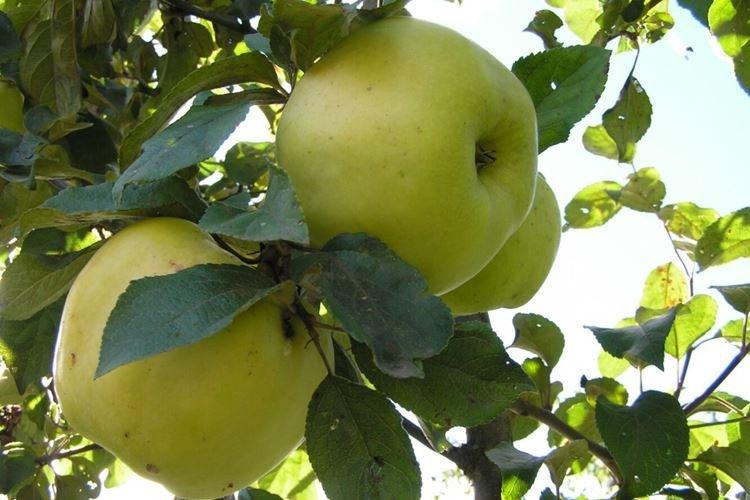
Reproduction and pollination
Columnar apple trees are propagated by grafting cuttings or air layers. To do this, in early spring, choose a strong shoot on an adult tree, make an incision in a circle, treat it with stimulants and cover it with peat with a film. By autumn, the future stalk will give roots with which it can already be transplanted. The president variety gives a good harvest even in seasons when there are almost no bees in the garden.
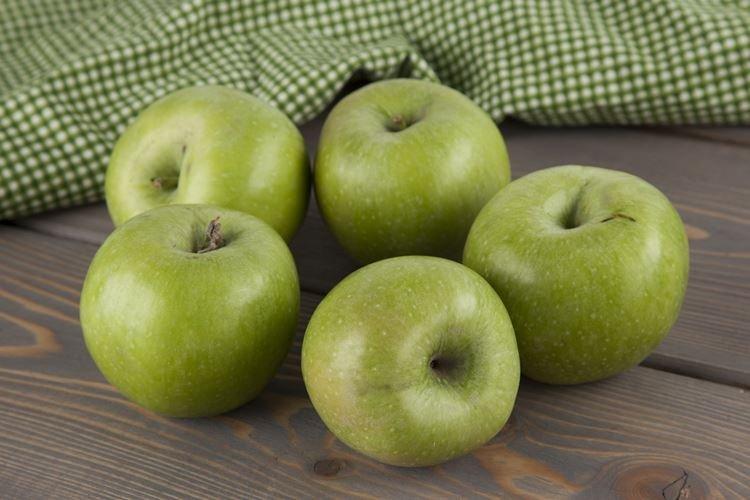
Pruning
Compared to other columnar varieties, the President does not grow and branch very quickly. But all the same, from the second year it is necessary to maintain a columnar shape and cut off all protruding and weak lateral shoots. Make sure that the apple tree does not overgrow too much, and try not to touch the main growth point for as long as possible.
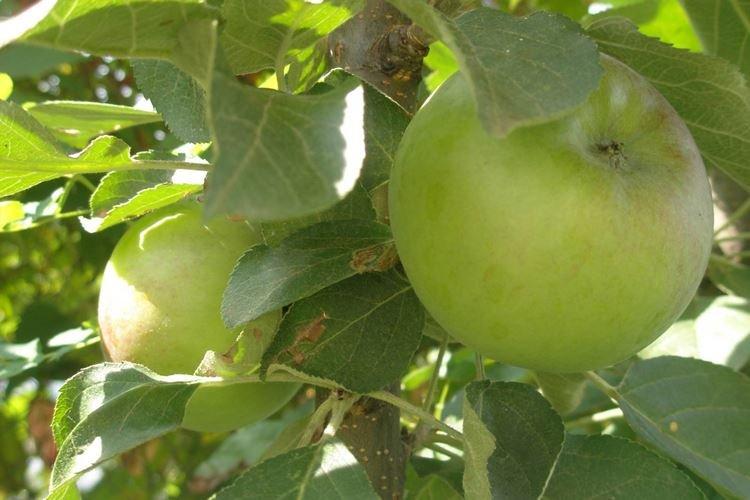
Harvesting
Due to the dense and powerful structure of the wood, the branches of the tree do not bend or break off even in the most productive years. By the age of five, one tree gives 5-8 kg of fruit, and with proper care, the yield can be doubled. Ripening occurs at the end of August, and the fruits are perfectly stored until winter.
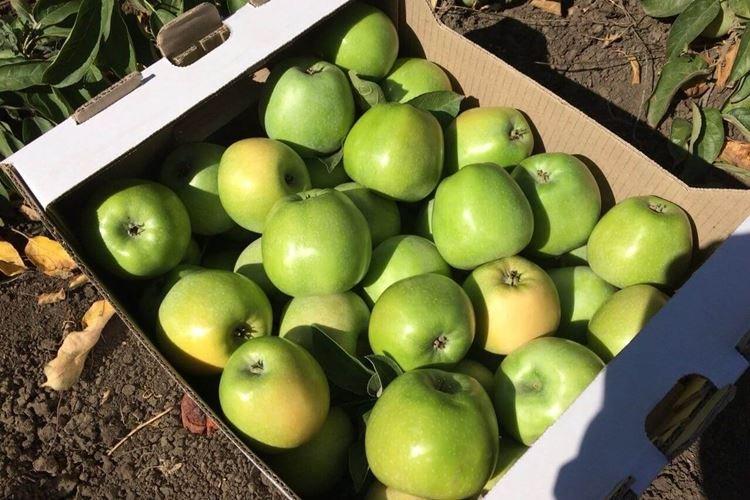
Wintering
The President is a fairly thermophilic variety, but it gets through the winters normally.Columnar apple trees are grown in the Moscow region, the Perm and Samara regions, the Black Earth and Non-Black Earth regions. In terms of winter hardiness, the President is compared with Antonovka. We recommend to wrap up the lower part of the trunk in cold weather.
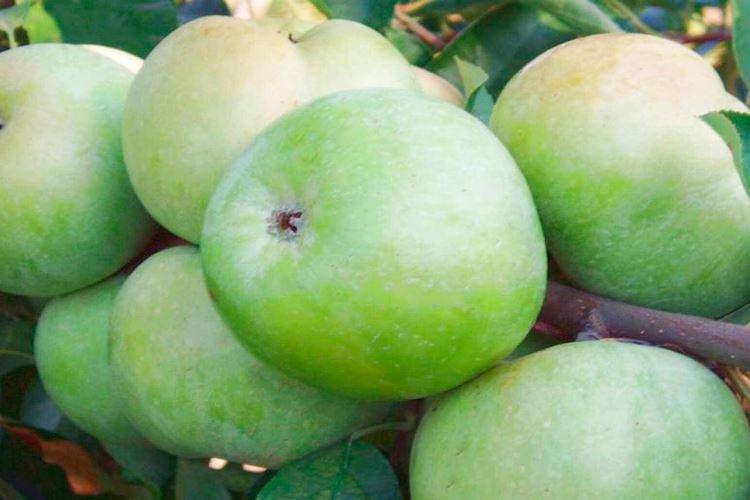
Planting a columnar apple President
The President variety takes root very well in the new area due to the fact that the seedlings already have a fairly developed root system. For the same reason, trees tolerate replanting well. The president will bloom in the first year, but we recommend that you cut the flowers for now, so that at first the tree will get stronger.
It is recommended to plant the President's seedlings in the spring, observing a distance of 60 cm. When planting in rows, make the row spacing a little more - about 90 cm. Prepare the pit in a couple of weeks and lay a mixture from the top layer of soil with humus on the bottom.
For convenience, to spread the roots when planting, fill in a small slide. Make sure that the root collar of the tree is always on the surface, and the seedling is generously fields.
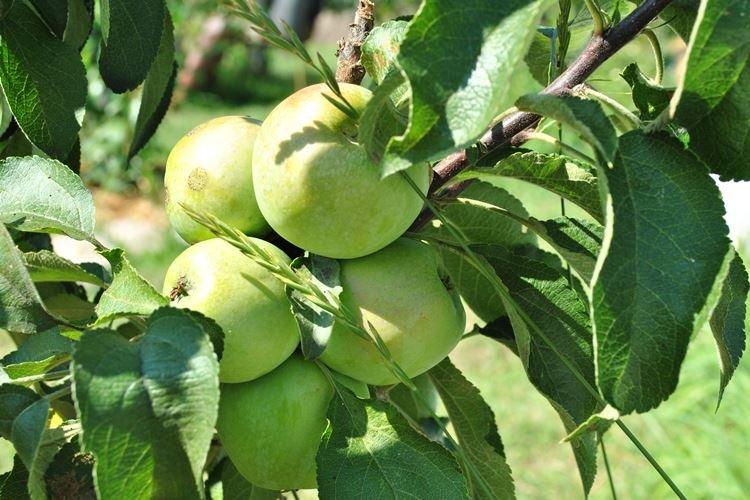
Diseases and pests of the apple tree President
The President's resistance to diseases and pests is above average, but this is not a reason to ignore preventive measures. Spray before flowering, and later form a protective ring from the caterpillars. For the prevention of rot and fungus, it is fundamentally important to monitor the humidity, immediately remove the carrion and remove damaged shoots.
